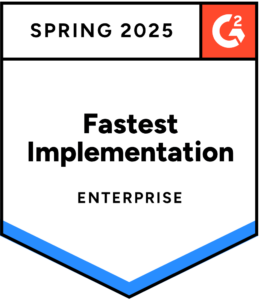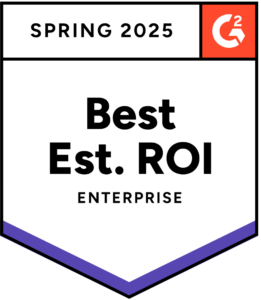Cadency Tip of the Month: Bulk vs Dynamic Account Maintenance
Blog post
Share
The implementation of Cadency is the first step in improving your processes, but full utilization of its capabilities is what truly drives transformation in across your Finance and Accounting organization. Cadency’s Dynamic Account Maintenance (DAM) functionality is more than just Bulk Account Maintenance, and this article explores how companies (like yours!) are taking advantage of this unique feature and seeing significant benefits.
“Today, we are loading about 100,000+ records and auto-reconciling over 90% of those reconciliations, which has been a significant win for us.” – LKQ Corporation
Instead of expending valuable time performing low-risk reconciliations and administrative tasks, DAM helps you dynamically identify risk and perform bulk operations. You can dynamically assign account attributes based upon your company’s defined business policy–such as criticality–to assign risk, determine scheduling, and much more.
What is Dynamic Account Maintenance?
DAM is Cadency’s version of a Bulk Account Maintenance functionality, where administrators can perform advanced searches and make changes to selected fields across multiple accounts. However, unlike typical Bulk Account Maintenance, DAM takes things one step further: it can automate the maintenance of accounts with user-defined logic and scheduled jobs.
Cadency users rely on DAM to:
- Schedule automatic evaluation on accounts based on a specified thresholds and make changes to selected fields across multiple accounts, including risk ratings as well as schedules and approval routings.
- Update core account attributes on new unassigned accounts based on business logic.
- Schedule automatic bulk processing for reconciliations, reviews, and approvals for accounts meeting specific requirements.
- Criteria can include:
- GL Balance
- GL to SL difference
- Variance
- Net unexplained difference
- Items less than number of days
- Criteria can include:
Benefits of DAM in Cadency
High Risk Awareness
DAM is a proactive technology within Cadency that can dynamically identify risk and adjust account reconciliations accordingly. Therefore, using DAM properly can automate large parts of an Administrator’s job of reassigning accounts. You can start by setting “if-and-then” rules based on your company’s risk ratings. For example, you can set a rule for accounts that exceed $200,000 to be routed to a workflow under a different manager for more frequent review. Then, when an account rises from $100,000 to $500,000, it is automatically reassigned to that manager.
Optimize Workload
Using DAM to assign risk ratings can determine scheduling and allow teams to focus on the accounts that are high value or risk. With user-defined rules, you can move an account reconciliation to later in the month-end or out to a quarterly or yearly reconciliation. By realigning workloads in this way, you can reduce the risk of long month-end close days and get ahead of the potential issues and bottlenecks that occur last minute.
Flexibility for Localization
Many users are at global organizations that chose Cadency because it supports multiple regions, languages, and currencies. Cadency’s DAM functionality can also be used to further improve processes and accuracy across different geographies.
Within your accounts, you can now specify which Currency Bucket to evaluate during the month-end close process. For example, CCY1 “Reporting”, CCY2 “Local”, CCY3 “Transaction”, etc. Additionally, you can set reconciliation parameters defined by different currency codes and regional thresholds so you can set up consistency maintenance with localization differences easily. Finally, you can use FX Conversion Rates for Auto Bulk thresholds, retaining the increased efficiency and control from automation.
Increase Efficiency
Knowledge is most definitely power, and with more knowledge of your solution you’ll develop the power to build in greater efficiency. Beyond specific searches and comparisons, DAM can help you become more efficient in your reconciliation process.
Much of an approver, preparer, and reviewer’s time is spent on accounts that have no changes from the previous period. To eliminate this inefficiency, Bulk Reconciliation has Zero Balance Accounts, Accounts with No Activity and GL to SL (sub-ledger), Net unexplained difference within threshold, and items less than number of days as parameters to be set and automatically closed out with no human intervention. You can also start reconciliations automatically and bring in any items for the reconciliation to reduce the amount of steps a reconciler needs to take by ensuring the reconciliation is ready for them to work on straight away.
Control and Traceability
One of the biggest concerns with automating account reconciliations involves high-risk accounts and the audit trail of automated reconciliations. DAM can be used to determine risk and help teams remain aware of potential risk dynamically–if criteria and account data changes, the rules will accurately govern the attributes of an account.
The logic to determine risk and the scheduling of accounts is maintained by Admins and a clear audit trail is defined. Cadency allows you to report on master data updates so that routine administrative procedures are traceable, auditable, and accountable.
Summary
Bulk Account Maintenance is great for one off bulk operations, but Dynamic Account Maintenance in Cadency takes this further to reduce the amount of work users need to perform to maintain an effective reconciliation process. Take the next step in your transformation journey to obtain greater efficiency whilst ensuring control.
Find this content helpful?
If you loved this blog, there’s more where that came from! Discover additional ways that Trintech can help you streamline your financial processes:






